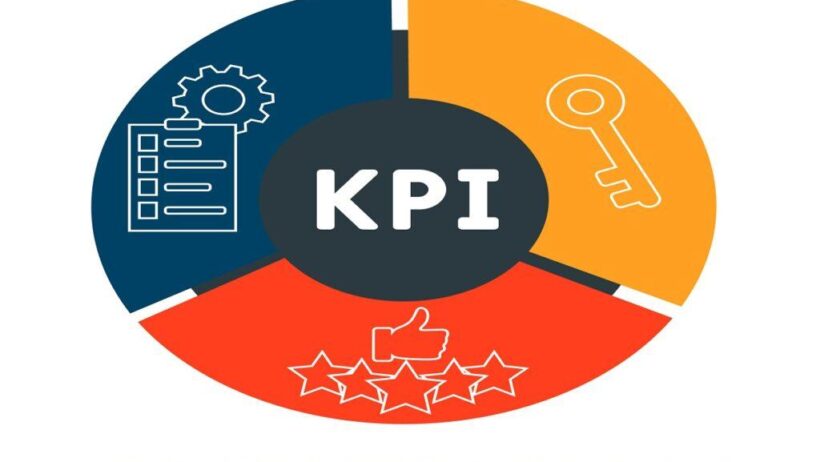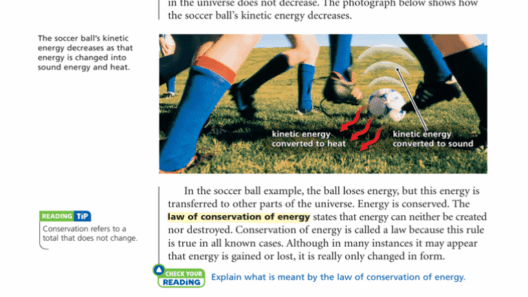Energy conservation within a system can be likened to the delicate equilibrium of a well-tuned orchestra, where each instrument plays its part to create a harmonious symphony. In this metaphorical orchestra, energy plays the role of both conductor and musician, guiding and performing throughout the system. Determining whether energy is conserved requires careful attention to certain indicators that can reveal the efficiency and effectiveness of energy use. Understanding these key performance indicators (KPIs) is vital for assessing whether a system is operating optimally or languishing in disarray.
To begin, it is essential to define energy conservation in practical terms. Energy conservation involves minimizing waste and maximizing efficiency within a given system, effectively ensuring that the amount of energy input into the system is balanced with the energy output. One of the first and most prominent indicators of energy conservation is the Energy Efficiency Ratio (EER). This ratio compares the energy output of a system, typically in terms of cooling or heating capacity, to the energy input required to achieve that output. A high EER signifies that the system utilizes energy effectively, manifesting a low level of waste.
Another critical metric to consider is the Coefficient of Performance (COP), which is often employed in heating and cooling applications. The COP is the ratio of useful heating or cooling provided to the energy consumed. Visualize a heat pump as a magician, where for every unit of energy invested, the illusion becomes a significant gain in temperature control. A higher COP indicates a meticulous performance where energy is conserved with finesse.
Moreover, the assessment of thermal dynamics within a system offers insights into energy conservation. Monitoring temperature gradients across various components can elucidate inefficiencies. If a system experiences excessive thermal losses, it is akin to an orchestra playing out of tune, where the notes resonate but fail to deliver a rich melody of energy efficiency. Instrumentation such as thermocouples or infrared thermometers can serve as vigilant overseers, providing real-time data about heat distribution and dissipation.
Another vital consideration is the load factor, which measures the efficiency of energy utilization over a specified period. It represents the ratio of the average load divided by the peak load during a specified time interval. A sustained high load factor suggests that the system is consistently operating near its optimal capacity. When energy consumption mirrors a well-paced rhythm rather than an erratic crescendo, it speaks volumes about the conservation practices in place. Conversely, significant discrepancies can indicate potential areas for improvement.
Embedded within the framework of energy conservation are the principles of renewable energy integration. Evaluating the proportion of energy sourced from renewable technologies offers a glimpse into the sustainability of the system. When a system efficiently integrates solar panels, wind turbines, or other renewable sources, it effectively extends the “lifespan” of traditional energy resources. Monitoring this integration alongside conventional energy metrics provides a holistic view of a system’s energy footprint, leading to informed decision-making based on an eco-conscious paradigm.
Furthermore, the concept of energy audit practices cannot be overlooked. Conducting meticulous energy audits enables stakeholders to identify trends and anomalies in energy consumption. Think of an energy audit as an investigative report revealing the hidden truths of energy usage. By dissecting distinctions between actual and predicted energy consumption, stakeholders can fine-tune operations and rectify inefficiencies, creating actionable insights akin to a composer revising a score.
Equally important in the realm of energy conservation is the use of smart metering technologies. These innovative systems monitor and analyze energy consumption in real-time, providing immediate feedback about energy use patterns. As a result, they empower users to make informed choices about their energy habits. A system equipped with smart meters behaves not unlike a seasoned conductor, directing each section of the orchestra with precision and vision to orchestrate a splendid performance of energy conservation.
It is also paramount to consider the environmental impact assessments associated with energy use. Evaluating the emissions and waste products derived from energy consumption reveals the broader implications of a system’s operational choices. Systems that strive for minimal carbon footprints and reduced pollutants can be seen as socially responsible members of the energy orchestration. They contribute to a larger symphony of sustainability, echoing the call for global conservation efforts.
Finally, the importance of stakeholder engagement in energy conservation cannot be overstated. Employee training, public awareness campaigns, and community involvement are instrumental in fostering a collective commitment to energy efficiency. When stakeholders are invested in the performance of the system, it amplifies the concert of energy conservation. Just as an ensemble relies on every musician to play their part, so too must a community collaborate towards a unified goal of sustainable energy use.
In conclusion, gauging whether energy is conserved within a system requires a multifaceted approach, evaluating various key indicators. By meticulously examining energy efficiency ratios, thermal dynamics, load factors, renewable energy integration, and employing cutting-edge technologies, one can discern the symphony of energy conservation within a system. Each metric acts like a note in a complex melody, harmonizing to create a powerful resolution in the face of climate change challenges. It is only through the astute observation and continuous refinement of these indicators that one can truly understand the state of energy conservation, paving the way toward a more sustainable future.








